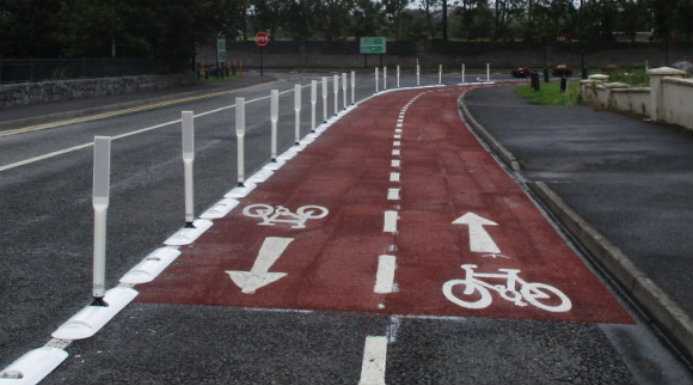It’s been suggested the removal of an Ennis cycle lane would be a spoke in the wheel for road safety.
The Mayor of Ennis was forced to withdraw a motion raised at this month’s meeting of the town’s local representatives which called from the removal of part of a cycle lane in the vicinity of St. Flannan’s College.
Tensions have flared among local representatives in Ennis over a proposal to remove one side of a cycle lane in a busy area of the town.
The Clonroadmore cycle scheme was installed on the stretch of road between St. Flannan’s College and Eire Óg GAA Grounds in 2019 following a report indicating that over 50% of vehicles travelling the route were going in excess of 50 kilometres per hour.
Ennis Municipal District says the cycle lane was installed to “create a safe space for vulnerable road users including cyclists and pedestrians” and claims the scheme “has achieved these goals”.
Speaking at this month’s meeting of councillors in the Ennis local electoral area, Mayor Pat Daly called for the cycle lane to be removed on one side of the road, on the grounds that the bollards and armadillos currently in place create a health and safety hazard for motorists.
The motion, which was eventually withdrawn, was strongly opposed by all councillors present bar Daly’s Fianna Fáil colleague Tom O’Callaghan and Ennis Fine Gael Councillor Johnny Flynn.
Clarecastle Fine Gael Councillor Paul Murphy claims if motorists are getting into difficulty on the road at present, it’s down to incompetent driving.
You can listen to the full interview below.
Ennis Municipal District has confirmed that under the Clarecastle to Ennis Active Travel Scheme, which will commence after the completion of the Tulla Road Cycle Scheme, the Clonroadmore cycle lanes will be upgraded to modern standards.
As part of this process, the bollards and armadillos will be removed and won’t be replaced.
Mayor of Ennis and Fianna Fáil Councillor Pat Daly believes the infrastructure’s installation was a “mistake” from the start.








